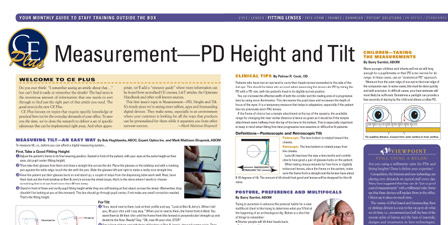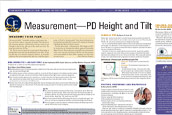By Linda Conlin, Pro to Pro Managing Editor
As Eye Care Practitioners (ECPs), we find ourselves in the position of “fixing” vision problems after they’ve been diagnosed. Glasses, contact lenses, vision therapy and more come out of our toolbox to help those who can no longer see clearly. But, with a nod to an old saying, what can we do to fix it before it’s broke?
March is National Save Your Vision Month, and we are in a unique position to educate our patients about taking care of their vision before problems begin. First and foremost is having regular eye exams. While healthy people don’t think twice about regular wellness checks from their physicians or dentists, most don’t have an eye exam until they have a vision problem. It’s up to us to get the word out that regular eye exams help preserve eye health. For example, sight threatening glaucoma can be identified and treated before the patient notices any effects on vision. Comprehensive eye exams also can identify systemic issues, such as diabetes, even before they show up in a routine physical.
Next is digital eye strain from hours spent on laptops, tablets, e-readers and phones. Consider that the average American worker spends seven hours a day viewing a computer. Then, after work, there are the phones, tablets and e-readers. That means most waking hours are spent staring at some type of digital device, resulting in eye strain, discomfort and, ultimately, vision problems. We know, too, that digital devices emit blue light, high energy visible light in the 460 to 500nm range. Research has shown that blue light can cause damage to ocular tissues, but the cumulative risks to the eye are not yet fully understood. However, blue light exposure at night has the potential to disrupt the circadian rhythm and lead to sleep disorders. So, even people who have no refractive disorders can benefit from plano lenses that filter blue light, but, again, we have to get the word out.
Then there’s nutrition, which is not only beneficial for overall health, but is a key factor in maintaining eye and vision health. The antioxidants found in fruits, leafy green vegetables and antioxidant supplements can help delay the development of cataract, glaucoma and age-related macular degeneration. Be sure your patients understand the importance of water in a healthy diet, too. A solution to dry eye maybe as simple as drinking more water. Research has shown that the best eye health results from a healthy diet maintained over a period of years. Again, nutrition is an area where everyone can take a proactive approach before vision problems appear.
So shout your Save Your Vision message on social media, and talk about it at community events. We’re the ones who have to get the information out. The Prevent Blindness America website has fact sheets you can hand out or post on media about these topics and more. You can also supplement your knowledge with our CEs What We Know – And Don’t Know – About Blue Light, and Nutrition and Vision at 2020mag.com/ce.
March 2019
Eyes/Optics













